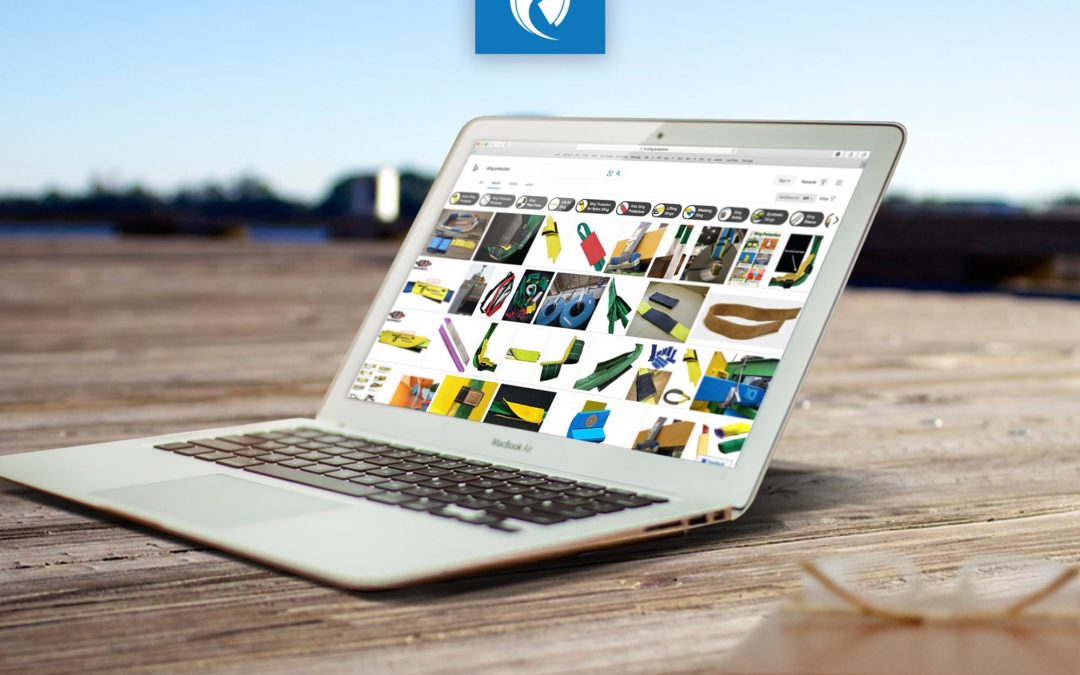Lifting slings are often used when moving heavy equipment during rigging projects. However, these slings can easily become damaged, and when slings are damaged, the load is at risk of being damaged as well. Sling protection can solve this problem. The term sling protection is sometimes used in the rigging industry to describe proper care for lifting slings, but here we are going to talk about sling protection products to strengthen and protect the sling and the load it is carrying.
What Is Sling Protection?
Sling protection products are used along with the lifting sling to ensure it is not damaged, cut, or abraded during the course of the rigging project. Sling protection also protects the load from being damaged by the sling itself. Different types of sling protection products are good for protecting the sling from different risks. For example, some sling protection provides resistance to abrasion, while others increase resistance to cutting.
Sling protection has come in a variety of materials over the years, and the type of material that should be used depends on the application. Some of the most common sling protection materials are polyester or nylon webbing, Kevlar, rubber, leather, and wood. The application and type of load being lifted should determine which material and type of sling protection should be used to protect the sling and the load. Sling protection is mostly used to protect the more important and expensive lifting slings. The idea here is that it is typically less expensive to replace the sling protection product multiple times than to replace the lifting sling.
The most common types of sling protection products are edge guards, wear pads, sleeves, and reinforced eyes. The purpose of sling protection is to protect the sling from damage, which increases its life. The load being lifted is also protected from the sling, especially when wire rope or alloy chain slings are being used. Ultimately, though, the main purpose of sling protection is to protect the lives of those working on the rigging project and those in the surrounding area.
When Should Sling Protection Be Used?
All types of lifting slings should be protected when they are exposed to sharp edges, corners, and protrusions. This includes wire rope, wire mesh, synthetic, and alloy chain slings, but sling protection products are most commonly used with synthetic lifting slings. A synthetic sling is not as strong as wire or alloy, so it cannot handle as much abuse; its polyester and nylon fibers are more prone to tears, abrasion, and cuts. So, while all slings need sling protection at times, synthetic slings almost always require added protection.
Sling protection is needed anywhere a synthetic lifting sling may come into contact with rigging hardware or the load during a rigging project. This includes:
- around lift points (such as load edges, eye bolts, hoist rings, etc.)
- around the crane hook, shackle, master link, etc.
- and on load edges above hookup points such as in handling dies
What Happens if Sling Protection Is Not Used?
Without sling protection, there will be much higher lifting sling turnover, which will make equipment costs higher. This is especially true when using synthetic slings. However, chain slings can also be damaged by load edges that can cause nicks, gouges, crushed links, and bent or twisted links. Edges can also damage unprotected wire rope and cause broken wires, kinks, and doglegs. Metal mesh slings can be damaged by an edge and incur broken wires, broken welds, and mesh distortion. Any type of lifting sling can be damaged when around an edge, so sling protection should be used whenever possible. Replacing sling protection is much more cost effective than replacing lifting slings.
In addition to damage to slings and increased equipment costs, there is also potential for damage to loads and injury to those nearby if lifting slings are not protected. Without the proper protection, a sling may become damaged, cut, or torn so severely that it will fail and drop the load. A dropped load can be very dangerous, leading to damage to the load and injury or even potentially loss of life to those around the rigging site.
What Are the Different Types of Sling Protection Products?
There are many different sling protection products out there. Here are a few of the most common types of sling protection used in rigging.
- Sleeves and Corner Pads – Sleeves wrap completely around the lifting sling to protect it from damage. Corner pads create a “tunnel” of protection for the sling around the edge of a load.
- Corner Protectors – Corner protectors are placed on the corners and edges of the load instead of on the sling itself to protect the sling from damage.
- Wear Pads – Wear pads act as a buffer between the load and the sling. They are typically used with chain and wire rope slings to reduce damage to the sling and to protect the load from damage in places of contact.
- Jackets and Covers – Some slings, especially round slings, may come with built-in jackets that are cut and abrasion resistant. Jackets and covers add a layer of protection around the entire sling.
Expert Rigging Company in Knoxville, TN
When moving heavy equipment, it is important to use the right rigging equipment, which includes the proper lifting slings and sling protection products. Here at Rowe Transfer, we have all the equipment necessary for moving heavy equipment as safely and efficiently as possible. Our team of rigging professionals has decades of in-house experience and utilizes the latest technology and equipment to complete the job. We will work closely with you to design your rigging project and smoothly implement it. If you need an experienced rigging company to move your heavy equipment, look no further than Rowe Transfer. To start your next rigging project, reach out to us today at 865-523-0421 or online.

